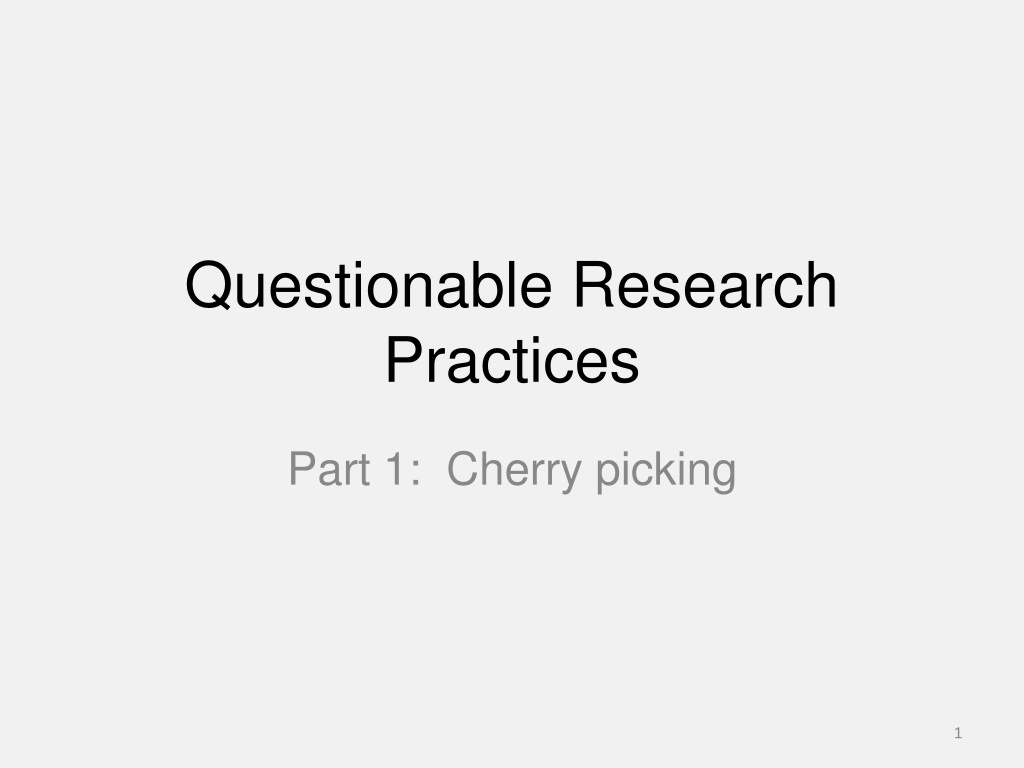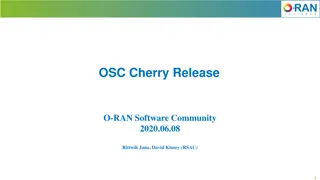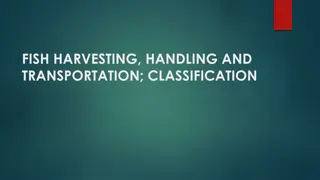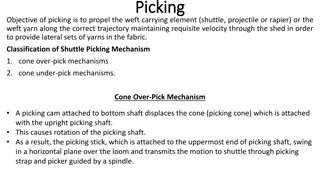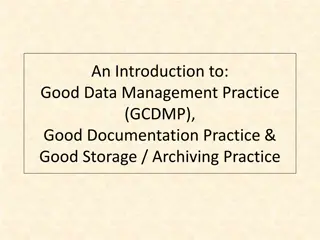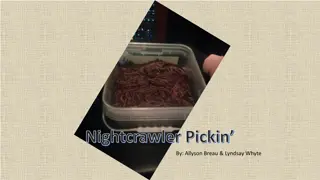Understanding Cherry-Picking in Research: Practices and Consequences
Cherry-picking in research involves selectively reporting variables, conditions, or treatments with high p-values, omitting non-significant results, and claiming completeness when other models were also tested. This unethical practice skews meta-analyses, impedes interpretation, leads to redundant investigations, and deprives readers of crucial information.
Download Presentation

Please find below an Image/Link to download the presentation.
The content on the website is provided AS IS for your information and personal use only. It may not be sold, licensed, or shared on other websites without obtaining consent from the author. Download presentation by click this link. If you encounter any issues during the download, it is possible that the publisher has removed the file from their server.
E N D
Presentation Transcript
Questionable Research Practices Part 1: Cherry picking 1
Cherry picking Failing to report variables, conditions, or treatments that had relatively high p-values. 2 Cherry picking by barnimages.com, CC BY 2.0
Cherry picking n = 573 Ecologists, 299 Evolutionary biologists 1. Not reporting studies or variables that failed to reach statistical significance (e.g. p 0.05) or some other desired statistical threshold. 2. Not reporting covariates that failed to reach statistical significance (e.g. p 0.05) or some other desired statistical threshold. 4. Reporting a set of statistical models as the complete tested set when other candidate models were also tested. 3
Cherry picking Reported having done at least once 4
Cherry picking Reported having done at least once 5
Cherry picking - consequences Impedes interpretation Non-significant results are important Readers lack the information Skews meta-analyses Leads to redundant investigation Unethical 7
